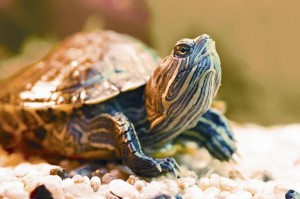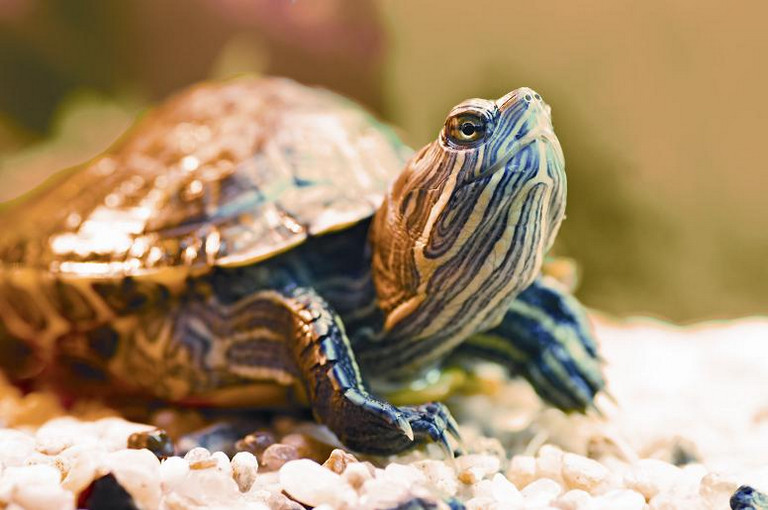Seeing the Light
Erik J. Martin //June 18, 2013//
First there was the T12, the thicker, less efficient and low-UVB granddaddy of the reptile fluorescent bulb.
Then, two years ago came the big switch to the T8, which offered improved energy savings.
Now comes the brightest idea yet: The high output T5, which promises to be a game changer for pet retailers, said Steven Spitz, owner of Big Apple Pet Supply, the Hauppauge, N.Y.-based pet goods manufacturer and supplier.
“These are the most efficient bulbs ever offered in this category,” Spitz said. “Compared to a comparably sized T12, (the T5) puts out double the UVB output using less wattage, and for about the same price as a T8. I can’t believe how well they’re selling—they’re unbelievably popular with our customers.”
Intense Light
Zoo Med’s Reptisun line recently introduced a T5 bulb that emits UVB and UVA light of stronger intensity. These bulbs are ideal for larger and taller enclosures, as they provide UVB penetration at greater distances and are available in 5.0 and 10.0 varieties and in 22”, 34” and 46” lengths. Correspondingly, the manufacturer has also rolled out a new Reptisun High Output T5 low profile fixture compatible with the new bulbs and offered in 24”, 36” and 48” sizes.
And for nano terrarium owners, Zoo Med has debuted new Reptisun mini compact fluorescent 5.0 and 10.0 13-watt bulbs. These bulbs can be safely used at close distances, making them perfect for smaller domes and tanks.
“The High Output T5 Reptisun bulbs allow pet keepers to provide UVB in large or tall enclosures, while the mini compact fluorescent bulbs allow keepers to deliver the correct amount of UVB for small enclosures, which are suitable for small or sedentary animals or animals with low UVB requirements,” Ashley Rademacher, animal care and education coordinator with Zoo Med Labs, Inc., said.
Stocking an adequate assortment of the latest UVB light sources is important, said Laurie Hess, DVM, Diplomate ABVP, owner and chief veterinarian at Veterinary Center for Birds and Exotics in Bedford Hills, N.Y.
“Temperate and desert species of reptiles each require different intensities of heat, and nocturnal versus diurnal species have different requirements for light, too,” Dr. Hess said. “Retailers need to recognize these differences and provide products that meet the needs of these various species.”
Mini Halogens
In other news, Zilla now offers a compact light and heat solution in the form of the Halogen Mini Dome, which provides the benefit of focused light and heat in a space-saving form that uses energy-efficient halogen bulbs, available in 25 or 50 watts (which compare, respectively, to 50- to 75-watt and 100- to 150-watt incandescents). Mini dome colors include day white, day blue or night red.
“The compact size and ability to mount the mini dome onto the screened portion of the enclosure using an included spring clip helps avoid jostling the dome around unnecessarily and pinpoints the heat,” Pam Morisse, associate brand manager with Central Garden and Pet, the Walnut Creek, Calif.-based owners of Zilla, said.
Zoo Med has also recently released its Moonlite incandescent night time heat bulb, made with uncoated colored glass.
The light’s dark blue hue will not disturb the reptile’s day and night cycle and is just right for night-time viewing.
The bulb comes in 25-, 40-, 60- and 100-watt sizes to provide nocturnal or round-the-clock heat for many different habitat sizes.
Spitz said the top lighting products he sells continue to be mercury vapor bulbs, followed by fluorescent bulbs, basking spots, night bulbs and infrared bulbs. His hottest movers among heating products are ceramic heat emitters, heat tape and heat mats.
“It’s important for retailers to understand exactly what’s needed for exotic animals in terms of lighting and heating needs as well as the sizes and enclosures required to properly care for the animal,” Spitz said. “I can’t tell you how many times we redo what big box stores provide to their customers.”
Spitz also suggests that retailers recommend thermostats to customers and bundle them with heating sources that don’t emit light.
“Without a thermostat, if you put a 100-watt ceramic emitter in the habitat, you’re just being hopeful that it will get to 88 degrees. But when you plug your emitter into a thermostat, you can set it and forget it with peace of mind.”
Preventing Bone Disease
Lastly, it can also pay to remind customers about metabolic bone disease, which can develop when reptiles don’t produce adequate vitamin D3, due to lack of exposure to adequate UVB light of certain wavelengths, and have to draw calcium out of their bones because they cannot absorb sufficient calcium from their food.
“As a veterinarian who treats reptiles and other exotic pets exclusively, I see metabolic bone disease more often than any other disease in reptiles,” Dr. Hess said. “This disease is generally completely preventable with proper heating, lighting and nutrition.”



















